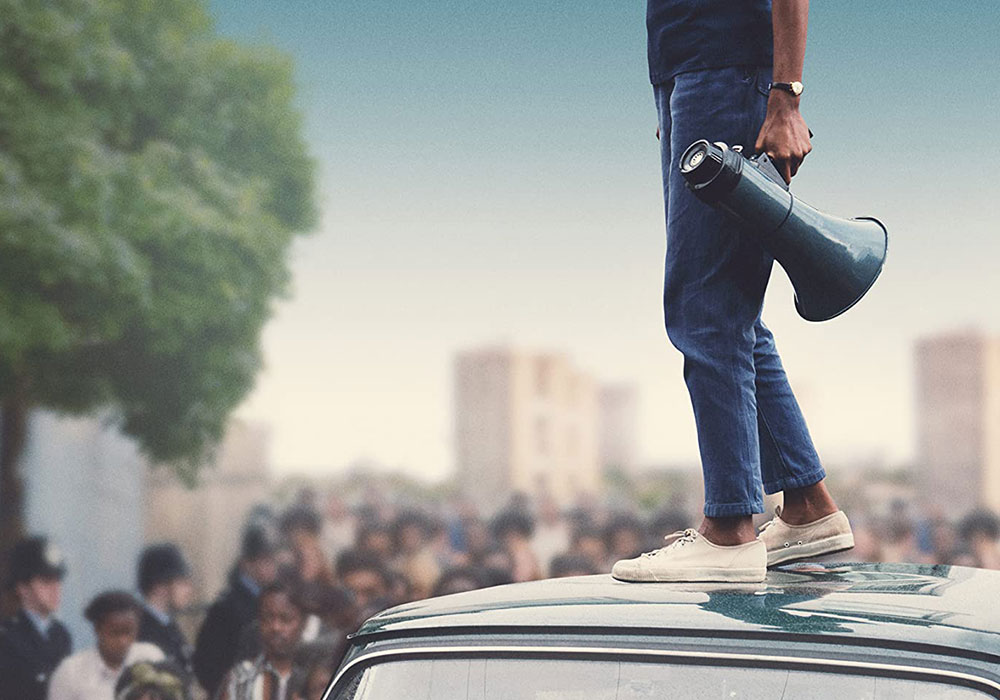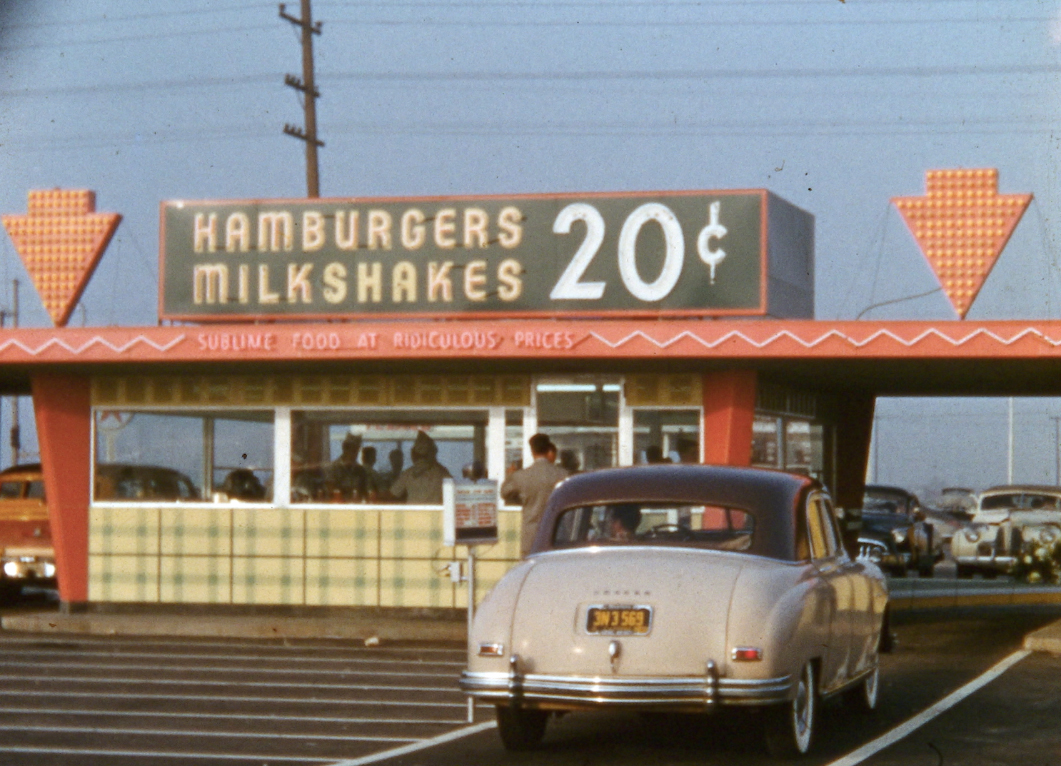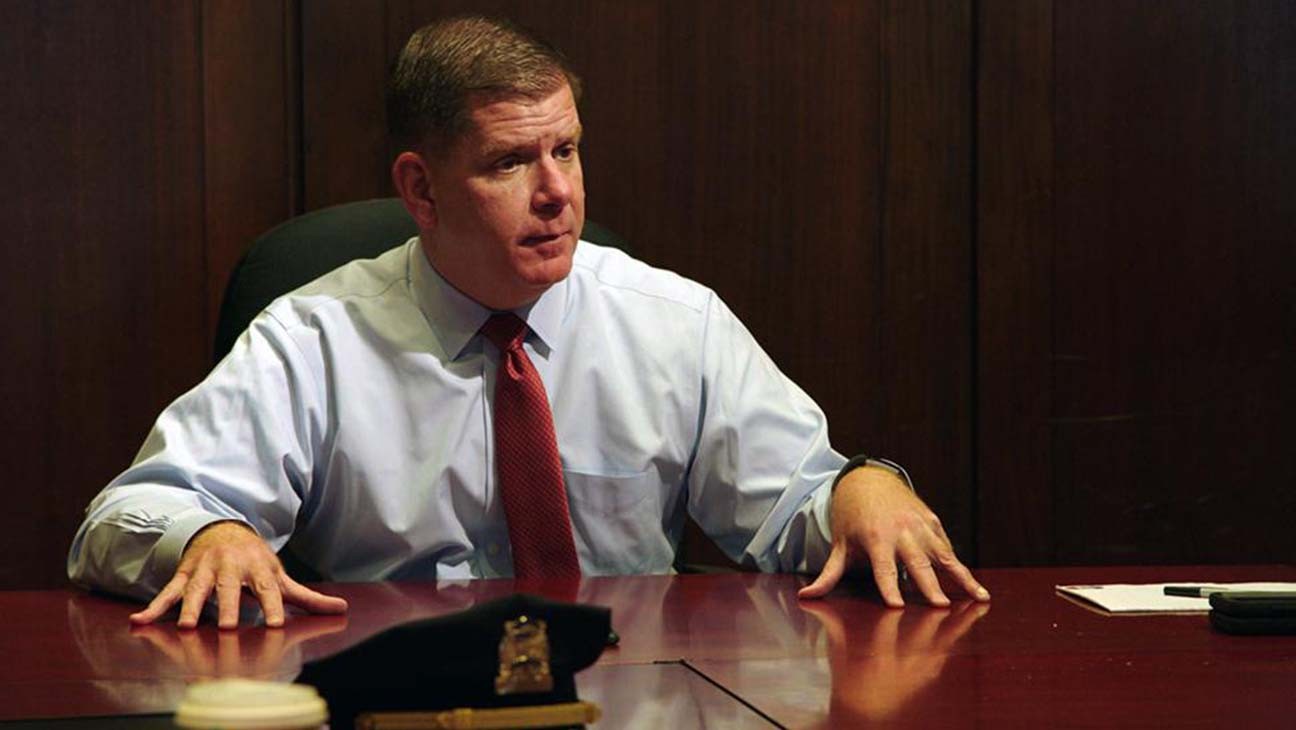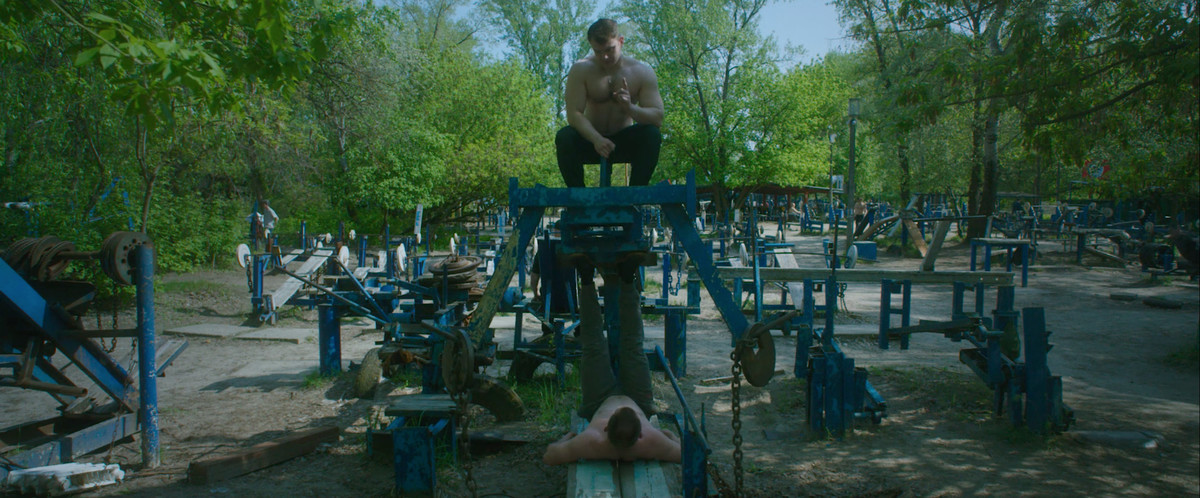Located in a seemingly-forgotten scrubby clearing of a wooded park on Kiev’s Dolobetski Island, the open-air free-weight gym of Kachalka is like an adventure playground for adults. A relic from the Soviet Era, the lifting facility is lovingly stewarded (and constantly expanded!) by caretaker Petro Shakhanov.
Gar O’Rourke’s short (9 min.) film, produced with funding from Screen Ireland and made available for free streaming via the PBS “POV” series, captures the spirit and the creativity of this location: it is a classic example of the way people in an urban context — even (or perhaps especially) during periods of economic down-turn – are able to tap into their deep reserves of creativity, grit, and communal resources to make do (and more), creating value out of waste, forging community out of the daily magic of simply showing up and sharing. The site hosts a bizarre menagerie of home-made — and quite curious — exercise machines fashioned from scrap metal, rusty chains, and whatever other spare parts have been saved and salvaged over the years, which the camera crew (and some new visitors to the Island) have a lot of fun exploring. (The sound team had a good time as well: throughout the film, the scenes are sewn together with a continuous soundtrack of cheery clanking metal.)
Interestingly, the film makes no mention of recent threats to the future of the facility, which exists in a sort of legal limbo. As with countless other types of urban “informal uses” — including community gardens, vacant lot soccer fields, prime graffiti mural sites, underground clubs and rave venues, sidewalk markets, and even shanty-towns and squatter settlements — properties such as this are allowed to thrive when land values are low, but become targets for formalization when the economics shift in favor of development.
One assumes the production team was aware of the issue: hopefully the film will help raise awareness of the community value of the park; at worst, it will at least preserve some of this legacy for future generations. For the moment, support for the gym seems strong, as the current pandemic conditions have increased the need for outdoor recreation (and, presumably, decreased market-forces pushing for development). After the bridge leading to the island was closed and weightlifters demonstrated their commitment by swimming to the island for their daily workouts, the police relented are agreed to re-open the access.
The film has screened in festivals around the world, including HotDocs, Newport Beach, and Flickerfest (where is received a special mention), but thanks to PBS you can watch it at home for free while you complete your own workout.






